Biology : A Global Approach
Original price was: ₹9,251.43.₹7,401.14Current price is: ₹7,401.14.
ISBN: 9781292170435
Author/Editor: Campbell
Publisher: Pearson
Year: 2018
2 in stock (can be backordered)
Description
The world? most successful majors biology text and media program are better than ever!
The 11th Edition of the best-selling Biology: A Global Approach, Global Edition, sets students on the path to success in biology through its clear and engaging narrative, superior skills instruction, innovative use of art and photos, and fully integrated media resources to enhance teaching and learning.
To engage learners in developing a deeper understanding of biology, the 11th Edition challenges them to apply their knowledge and skills to a variety of new hands-on activities and exercises in the text and online. Content updates throughout the text reflect rapidly evolving research, and new learning tools include Problem-Solving Exercises, Visualizing Figures, Visual Skills Questions, and more.
MasteringBiology?is not included. Students, if MasteringBiology is a recommended/mandatory component of the course, please ask your instructor for the correct ISBN. MasteringBiology should only be purchased when required by an instructor. Instructors, contact your Pearson representative for more information.
MasteringBiology is an online homework, tutorial, and assessment program designed to work with this text to engage students and improve results. Interactive, self-paced tutorials provide individualized coaching to help students stay on track. With a wide range of activities available, students can actively learn, understand, and retain even the most difficult concepts
Additional information
| Weight | 0.34 kg |
|---|
Product Properties
| Year of Publication | 2018 |
|---|---|
| Table of Contents | 2 Atoms and Molecules A Chemical Connection to Biology Concept 2.1 Matter consists of chemical elements in pure form and in combinations called compounds Concept 2.2 An element? properties depend on the structure of its atoms Concept 2.3 The formation and function of molecules depend on chemical bonding between atoms Concept 2.4 Chemical reactions make and break chemical bonds 3 The Chemistry of Water The Molecule That Supports All of Life Concept 3.1 Polar covalent bonds in water molecules result in hydrogen bonding Concept 3.2 Four emergent properties of water contribute to Earth? suitability for life Concept 3.3 Acidic and basic conditions affect living organisms 4 Carbon: The Basis of Molecular Diversity Carbon: The Backbone of Life Concept 4.1 Organic chemistry is the study of carbon compounds Concept 4.2 Carbon atoms can form diverse molecules by bonding to four other atoms Concept 4.3 A few chemical groups are key to molecular function 5 Biological Macromolecules and Lipids The Molecules of Life Concept 5.1 Macromolecules are polymers, built from monomers Concept 5.2 Carbohydrates serve as fuel and building material Concept 5.3 Lipids are a diverse group of hydrophobic molecules Concept 5.4 Proteins include a diversity of structures, resulting in a wide range of functions Concept 5.5 Nucleic acids store, transmit, and help express hereditary information Concept 5.6 Genomics and proteomics have transformed biological inquiry and applications 6 Energy and Life The Energy of Life Concept 6.1 An organism? metabolism transforms matter and energy, subject to the laws of thermodynamics Concept 6.2 The free-energy change of a reaction tells us whether or not the reaction occurs spontaneously Concept 6.3 ATP powers cellular work by coupling exergonic reactions to endergonic reactions Concept 6.4 Enzymes speed up metabolic reactions by lowering energy barriers Concept 6.5 Regulation of enzyme activity helps control metabolism Unit 2 Cell biology 7 Cell Structure and Function The Fundamental Units of Life Concept 7.1 Biologists use microscopes and biochemistry to study cells Concept 7.2 Eukaryotic cells have internal membranes that compartmentalize their functions Concept 7.3 The eukaryotic cell? genetic instructions are housed in the nucleus and carried out by the ribosomes Concept 7.4 The endomembrane system regulates protein traffic and performs metabolic functions Concept 7.5 Mitochondria and chloroplasts change energy from one form to another Concept 7.6 The cytoskeleton is a network of fibers that organizes structures and activities in the cell Concept 7.7 Extracellular components and connections between cells help coordinate cellular activities Concept 7.8 A cell is greater than the sum of its parts 8 Cell Membranes Life at the Edge Concept 8.1 Cellular membranes are fluid mosaics of lipids and proteins Concept 8.2 Membrane structure results in selective permeability Concept 8.3 Passive transport is diffusion of a substance across a membrane with no energy investment Concept 8.4 Active transport uses energy to move solutes against their gradients Concept 8.5 Bulk transport across the plasma membrane occurs by exocytosis and endocytosis 9 Cellular Signaling Cellular Messaging Concept 9.1 External signals are converted to responses within the cell Concept 9.2 Reception: A signaling molecule binds to a receptor protein, causing it to change shape Concept 9.3 Transduction: Cascades of molecular interactions relay signals from receptors to target molecules in the cell Concept 9.4 Response: Cell signaling leads to regulation of transcription or cytoplasmic activities Concept 9.5 Apoptosis integrates multiple cell-signaling pathways 10 Cell Respiration Life Is Work Concept 10.1 Catabolic pathways yield energy by oxidizing organic fuels Concept 10.2 Glycolysis harvests chemical energy by oxidizing glucose to pyruvate Concept 10.3 After pyruvate is oxidized, the citric acid cycle completes the energy-yielding oxidation of organic molecules Concept 10.4 During oxidative phosphorylation, chemiosmosis couples electron transport to ATP synthesis Concept 10.5 Fermentation and anaerobic respiration enable cells to produce ATP without the use of oxygen Concept 10.6 Glycolysis and the citric acid cycle connect to many other metabolic pathways 11 Photosynthetic Processes The Process That Feeds the Biosphere Concept 11.1 Photosynthesis converts light energy to the chemical energy of food Concept 11.2 The light reactions convert solar energy to the chemical energy of ATP and NADPH Concept 11.3 The Calvin cycle uses the chemical energy of ATP and NADPH to reduce CO2 to sugar Concept 11.4 Alternative mechanisms of carbon fixation have evolved in hot, arid climates Concept 11.5 Life depends on photosynthesis 12 Mitosis The Key Roles of Cell Division Concept 12.1 Most cell division results in genetically identical daughter cells Concept 12.2 The mitotic phase alternates with interphase in the cell cycle Concept 12.3 The eukaryotic cell cycle is regulated by a molecular control system Unit 3 THE GENETIC BASIS OF LIFE 13 Sexual Life Cycles and Meiosis Variations on a Theme Concept 13.1 Offspring acquire genes from parents by inheriting chromosomes Concept 13.2 Fertilization and meiosis alternate in sexual life cycles Concept 13.3 Meiosis reduces the number of chromosome sets from diploid to haploid Concept 13.4 Genetic variation produced in sexual life cycles contributes to evolution 14 Mendelian Genetics Drawing from the Deck of Genes Concept 14.1 Mendel used the scientific approach to identify two laws of inheritance Concept 14.2 Probability laws govern Mendelian inheritance Concept 14.3 Inheritance patterns are often more complex than predicted by simple Mendelian genetics Concept 14.4 Many human traits follow Mendelian patterns of inheritance 15 Linkage and Chromosomes Locating Genes Along Chromosomes Concept 15.1 Morgan showed that Mendelian inheritance has its physical basis in the behavior of chromosomes: scientific inquiry Concept 15.2 Sex-linked genes exhibit unique patterns of inheritance Concept 15.3 Linked genes tend to be inherited together because they are located near each other on the same chromosome Concept 15.4 Alterations of chromosome number or structure cause some genetic disorders Concept 15.5 Some inheritance patterns are exceptions to standard Mendelian inheritance 16 Nucleic Acids and Inheritance Life? Operating Instructions Concept 16.1 DNA is the genetic material Concept 16.2 Many proteins work together in DNA replication and repair Concept 16.3 A chromosome consists of a DNA molecule packed together with proteins 17 Expression of Genes The Flow of Genetic Information Concept 17.1 Genes specify proteins via transcription and translation Concept 17.2 Transcription is the DNA-directed synthesis of RNA: a closer look Concept 17.3 Eukaryotic cells modify RNA after transcription Concept 17.4 Translation is the RNA-directed synthesis of a polypeptide: a closer look Concept 17.5 Mutations of one or a few nucleotides can affect protein structure and function 18 Control of Gene Expression Beauty in the Eye of the Beholder Concept 18.1 Bacteria often respond to environmental change by regulating transcription Concept 18.2 Eukaryotic gene expression is regulated at many stages Concept 18.3 Noncoding RNAs play multiple roles in controlling gene expression Concept 18.4 A program of differential gene expression leads to the different cell types in a multicellular organism Concept 18.5 Cancer results from genetic changes that affect cell cycle control 19 DNA Technology The DNA Toolbox Concept 19.1 DNA sequencing and DNA cloning are valuable tools for genetic engineering and biological inquiry Concept 19.2 Biologists use DNA technology to study gene expression and function Concept 19.3 Cloned organisms and stem cells are useful for basic research and other applications Concept 19.4 The practical applications of DNA-based biotechnology affect our lives in many ways 20 The Evolution of Genomes Reading the Leaves from the Tree of Life Concept 20.1 The Human Genome Project fostered development of faster, less expensive sequencing techniques Concept 20.2 Scientists use bioinformatics to analyze genomes and their functions Concept 20.3 Genomes vary in size, number of genes, and gene density Concept 20.4 Multicellular eukaryotes have a lot of noncoding DNA and many multigene families Concept 20.5 Duplication, rearrangement, and mutation of DNA contribute to genome evolution Concept 20.6 Comparing genome sequences provides clues to evolution and development Unit 4 Evolution 21 How Evolution Works Endless Forms Most Beautiful Concept 21.1 The Darwinian revolution challenged traditional views of a young Earth inhabited by unchanging species Concept 21.2 Descent with modification by natural selection explains the adaptations of organisms and the unity and diversity of life Concept 21.3 Evolution is supported by an overwhelming amount of scientific evidence 22 Phylogenetic Reconstruction Investigating the Tree of Life Concept 22.1 Phylogenies show evolutionary relationships Concept 22.2 Phylogenies are inferred from morphological and molecular data Concept 22.3 Shared characters are used to construct phylogenetic trees Concept 22.4 An organism? evolutionary history is documented in its genome Concept 22.5 Molecular clocks help track evolutionary time Concept 22.6 Our understanding of the tree of life continues to change based on new data 23 Microevolution The Smallest Unit of Evolution Concept 23.1 Genetic variation makes evolution possible Concept 23.2 The Hardy-Weinberg equation can be used to test whether a population is evolving Concept 23.3 Natural selection, genetic drift, and gene flow can alter allele frequencies in a population Concept 23.4 Natural selection is the only mechanism that consistently causes adaptive evolution 24 Species and Speciation That ?ystery of Mysteries? Concept 24.1 The biological species concept emphasizes reproductive isolation Concept 24.2 Speciation can take place with or without geographic separation Concept 24.3 Hybrid zones reveal factors that cause reproductive isolation Concept 24.4 Speciation can occur rapidly or slowly and can result from changes in few or many genes 25 Macroevolution A Surprise in the Desert Concept 25.1 Conditions on early Earth made the origin of life possible Concept 25.2 The fossil record documents the history of life Concept 25.3 Key events in life? history include the origins of unicellular and multicellular organisms and the colonization of land Concept 25.4 The rise and fall of groups of organisms reflect differences in speciation and extinction rates Concept 25.5 Major changes in body form can result from changes in the sequences and regulation of developmental genes Concept 25.6 Evolution is not goal oriented Unit 5 THE DIVERSITY OF LIFE 26 Introduction to Viruses A Borrowed Life Concept 26.1 A virus consists of a nucleic acid surrounded by a protein coat Concept 26.2 Viruses replicate only in host cells Concept 26.3 Viruses and prions are formidable pathogens in animals and plants 27 Prokaryotes Masters of Adaptation Concept 27.1 Structural and functional adaptations contribute to prokaryotic success Concept 27.2 Rapid reproduction, mutation, and genetic recombination promote genetic diversity in prokaryotes Concept 27.3 Diverse nutritional and metabolic adaptations have evolved in prokaryotes Concept 27.4 Prokaryotes have radiated into a diverse set of lineages Concept 27.5 Prokaryotes play crucial roles in the biosphere Concept 27.6 Prokaryotes have both beneficial and harmful impacts on humans 28 The Origin and Evolution of Eukaryotes Living Small Concept 28.1 Most eukaryotes are single-celled organisms Concept 28.2 Excavates include protists with modified mitochondria and protists with unique flagella Concept 28.3 SAR is a highly diverse group of protists defined by DNA similarities Concept 28.4 Red algae and green algae are the closest relatives of plants Concept 28.5 Unikonts include protists that are closely related to fungi and animals Concept 28.6 Protists play key roles in ecological communities 29 Nonvascular and Seedless Vascular Plants The Greening of Earth Concept 29.1 Plants evolved from green algae Concept 29.2 Mosses and other nonvascular plants have life cycles dominated by gametophytes Concept 29.3 Ferns and other seedless vascular plants were the first plants to grow tall 30 Seed Plants Transforming the World Concept 30.1 Seeds and pollen grains are key adaptations for life on land Concept 30.2 Gymnosperms bear ?aked?seeds, typically on cones Concept 30.3 The reproductive adaptations of angiosperms include flowers and fruits Concept 30.4 Human welfare depends on seed plants 31 Introduction to Fungi Hidden Networks Concept 31.1 Fungi are heterotrophs that feed by absorption Concept 31.2 Fungi produce spores through sexual or asexual life cycles Concept 31.3 The ancestor of fungi was an aquatic, single-celled, flagellated protist Concept 31.4 Fungi have radiated into a diverse set of lineages Concept 31.5 Fungi play key roles in nutrient cycling, ecological interactions, and human welfare 32 An Introduction to Animal Diversity A Kingdom of Consumers Concept 32.1 Animals are multicellular, heterotrophic eukaryotes with tissues that develop from embryonic layers Concept 32.2 The history of animals spans more than half a billion years Concept 32.3 Animals can be characterized by ?ody plans? Concept 32.4 Views of animal phylogeny continue to be shaped by new molecular and morphological data 33 Invertebrates A Dragon Without a Backbone Concept 33.1 Sponges are basal animals that lack tissues Concept 33.2 Cnidarians are an ancient phylum of eumetazoans Concept 33.3 Lophotrochozoans, a clade identified by molecular data, have the widest range of animal body forms Concept 33.4 Ecdysozoans are the most species-rich animal group Concept 33.5 Echinoderms and chordates are deuterostomes 34 Vertebrates Half a Billion Years of Backbones Concept 34.1 Chordates have a notochord and a dorsal, hollow nerve cord Concept 34.2 Vertebrates are chordates that have a backbone Concept 34.3 Gnathostomes are vertebrates that have jaws Concept 34.4 Tetrapods are gnathostomes that have limbs Concept 34.5 Amniotes are tetrapods that have a terrestrially adapted egg Concept 34.6 Mammals are amniotes that have hair and produce milk Concept 34.7 Humans are mammals that have a large brain and bipedal locomotion Unit 6 PLANTS: STRUCTURE AND FUNCTION 35 Plant Structure and Growth Are Plants Computers? Concept 35.1 Plants have a hierarchical organization consisting of organs, tissues, and cells Concept 35.2 Different meristems generate new cells for primary and secondary growth Concept 35.3 Primary growth lengthens roots and shoots Concept 35.4 Secondary growth increases the diameter of stems and roots in woody plants Concept 35.5 Growth, morphogenesis, and cell differentiation produce the plant body 36 Transport in Vascular Plants A Whole Lot of Shaking Going On Concept 36.1 Adaptations for acquiring resources were key steps in the evolution of vascular plants Concept 36.2 Different mechanisms transport substances over short or long distances Concept 36.3 Transpiration drives the transport of water and minerals from roots to shoots via the xylem Concept 36.4 The rate of transpiration is regulated by stomata Concept 36.5 Sugars are transported from sources to sinks via the phloem Concept 36.6 The symplast is highly dynamic 37 Plant Nutrition The Corkscrew Carnivore Concept 37.1 Soil contains a living, complex ecosystem Concept 37.2 Plant roots absorb essential elements from the soil Concept 37.3 Plant nutrition often involves relationships with other organisms 38 Reproduction of Flowering Plants Flowers of Deceit Concept 38.1 Flowers, double fertilization, and fruits are key features of the angiosperm life cycle Concept 38.2 Flowering plants reproduce sexually, asexually, or both Concept 38.3 People modify crops by breeding and genetic engineering 39 Plant Signals and Behavior Stimuli and a Stationary Life Concept 39.1 Signal transduction pathways link signal reception to response Concept 39.2 Plant hormones help coordinate growth, development, and responses to stimuli Concept 39.3 Responses to light are critical for plant success Concept 39.4 Plants respond to a wide variety of stimuli other than light Concept 39.5 Plants respond to attacks by pathogens and herbivores Unit 7 ANIMALS: STRUCTURE AND FUNCTION 40 The Animal Body Diverse Forms, Common Challenges Concept 40.1 Animal form and function are correlated at all levels of organization Concept 40.2 Feedback control maintains the internal environment in many animals Concept 40.3 Homeostatic processes for thermoregulation involve form, function, and behavior Concept 40.4 Energy requirements are related to animal size, activity, and environment 41 Chemical Signals in Animals The Body? Long-Distance Regulators Concept 41.1 Hormones and other signaling molecules bind to target receptors, triggering specific response pathways Concept 41.2 Feedback regulation and coordination with the nervous system are common in hormone pathways Concept 41.3 Endocrine glands respond to diverse stimuli in regulating homeostasis, development, and behavior 42 Animal Digestive Systems The Need to Feed Concept 42.1 An animal? diet must supply chemical energy, organic building blocks, and essential nutrients Concept 42.2 Food processing involves ingestion, digestion, absorption, and elimination Concept 42.3 Organs specialized for sequential stages of food processing form the mammalian digestive system Concept 42.4 Evolutionary adaptations of vertebrate digestive systems correlate with diet Concept 42.5 Feedback circuits regulate digestion, energy storage, and appetite 43 Animal Transport Systems Trading Places Concept 43.1 Circulatory systems link exchange surfaces with cells throughout the body Concept 43.2 Coordinated cycles of heart contraction drive double circulation in mammals Concept 43.3 Patterns of blood pressure and flow reflect the structure and arrangement of blood vessels Concept 43.4 Blood components function in exchange, transport, and defense Concept 43.5 Gas exchange occurs across specialized respiratory surfaces Concept 43.6 Breathing ventilates the lungs Concept 43.7 Adaptations for gas exchange include pigments that bind and transport gases 44 Animal Excretory Systems A Balancing Act Concept 44.1 Osmoregulation balances the uptake and loss of water and solutes Concept 44.2 An animal? nitrogenous wastes reflect its phylogeny and habitat Concept 44.3 Diverse excretory systems are variations on a tubular theme Concept 44.4 The nephron is organized for stepwise processing of blood filtrate Concept 44.5 Hormonal circuits link kidney function, water balance, and blood pressure 45 Animal Reproductive Systems Let Me Count the Ways Concept 45.1 Both asexual and sexual reproduction occur in the animal kingdom Concept 45.2 Fertilization depends on mechanisms that bring together sperm and eggs of the same species Concept 45.3 Reproductive organs produce and transport gametes Concept 45.4 The interplay of tropic and sex hormones regulates reproduction in mammals Concept 45.5 In placental mammals, an embryo develops fully within the mother? uterus 46 Development in Animals A Body-Building Plan Concept 46.1 Fertilization and cleavage initiate embryonic development Concept 46.2 Morphogenesis in animals involves specific changes in cell shape, position, and survival Concept 46.3 Cytoplasmic determinants and inductive signals regulate cell fate 47 Animal Defenses Against Infection Recognition and Response Concept 47.1 In innate immunity, recognition and response rely on traits common to groups of pathogens Concept 47.2 In adaptive immunity, receptors provide pathogen-specific recognition Concept 47.3 Adaptive immunity defends against infection of body fluids and body cells Concept 47.4 Disruptions in immune system function can elicit or exacerbate disease 48 Electrical Signals in Animals Lines of Communication Concept 48.1 Neuron structure and organization reflect function in information transfer Concept 48.2 Ion pumps and ion channels establish the resting potential of a neuron Concept 48.3 Action potentials are the signals conducted by axons Concept 48.4 Neurons communicate with other cells at synapses 49 Neural Regulation in Animals Command and Control Center Concept 49.1 Nervous systems consist of circuits of neurons and supporting cells Concept 49.2 The vertebrate brain is regionally specialized Concept 49.3 The cerebral cortex controls voluntary movement and cognitive functions Concept 49.4 Changes in synaptic connections underlie memory and learning Concept 49.5 Many nervous system disorders can now be explained in molecular terms 50 Sensation and Movement in Animals Sense and Sensibility Concept 50.1 Sensory receptors transduce stimulus energy and transmit signals to the central nervous system Concept 50.2 In hearing and equilibrium, mechanoreceptors detect moving fluid or settling particles Concept 50.3 The diverse visual receptors of animals depend on light-absorbing pigments Concept 50.4 The senses of taste and smell rely on similar sets of sensory receptors Concept 50.5 The physical interaction of protein filaments is required for muscle function Concept 50.6 Skeletal systems transform muscle contraction into locomotion Unit 8 THE ECOLOGY OF LIFE 51 An Overview of Ecology Discovering Ecology Concept 51.1 Earth? climate varies by latitude and season and is changing rapidly Concept 51.2 The distribution of terrestrial biomes is controlled by climate and disturbance Concept 51.3 Aquatic biomes are diverse and dynamic systems that cover most of Earth Concept 51.4 Interactions between organisms and the environment limit the distribution of species Concept 51.5 Ecological change and evolution affect one another over long and short periods of time 52 Behavioral Ecology The How and Why of Animal Activity Concept 52.1 Discrete sensory inputs can stimulate both simple and complex behaviors Concept 52.2 Learning establishes specific links between experience and behavior Concept 52.3 Selection for individual survival and reproductive success can explain diverse behaviors Concept 52.4 Genetic analyses and the concept of inclusive fitness provide a basis for studying the evolution of behavior 53 Populations and Life History Traits Turtle Tracks Concept 53.1 Biotic and abiotic factors affect population density, dispersion, and demographics Concept 53.2 The exponential model describes population growth in an idealized, unlimited environment Concept 53.3 The logistic model describes how a population grows more slowly as it nears its carrying capacity Concept 53.4 Life history traits are products of natural selection Concept 53.5 Density-dependent factors regulate population growth Concept 53.6 The human population is no longer growing exponentially but is still increasing rapidly 54 Biodiversity and Communities Communities in Motion Concept 54.1 Community interactions are classified by whether they help, harm, or have no effect on the species involved Concept 54.2 Diversity and trophic structure characterize biological communities Concept 54.3 Disturbance influences species diversity and composition Concept 54.4 Biogeographic factors affect community diversity Concept 54.5 Pathogens alter community structure locally and globally 55 Energy Flow and Chemical Cycling in Ecosystems Transformed to Tundra Concept 55.1 Physical laws govern energy flow and chemical cycling in ecosystems Concept 55.2 Energy and other limiting factors control primary production in ecosystems Concept 55.3 Energy transfer between trophic levels is typically only 10% efficient Concept 55.4 Biological and geochemical processes cycle nutrients and water in ecosystems Concept 55.5 Restoration ecologists return degraded ecosystems to a more natural state 56 Conservation and Global Ecology Psychedelic Treasure Concept 56.1 Human activities threaten Earth? biodiversity Concept 56.2 Population conservation focuses on population size, genetic diversity, and critical habitat Concept 56.3 Landscape and regional conservation help sustain biodiversity Concept 56.4 Earth is changing rapidly as a result of human actions Concept 56.5 Sustainable development can improve human lives while conserving biodiversity |
| Author | Campbell |
| ISBN/ISSN | 9781292170435 |
| Binding | Paperback |
| Edition | 11 |
| Publisher | Pearson |
You must be logged in to post a review.

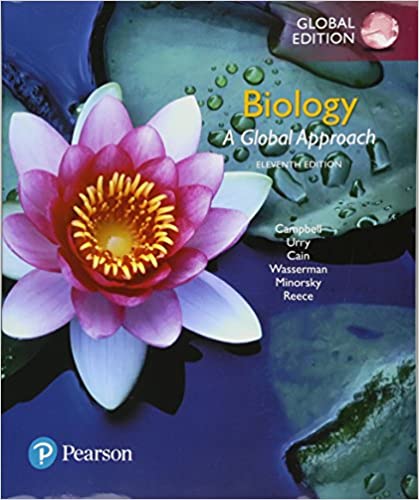
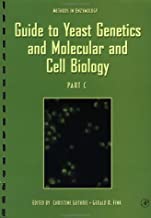
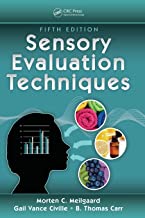
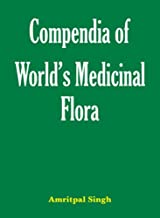
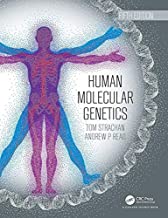
Reviews
There are no reviews yet.